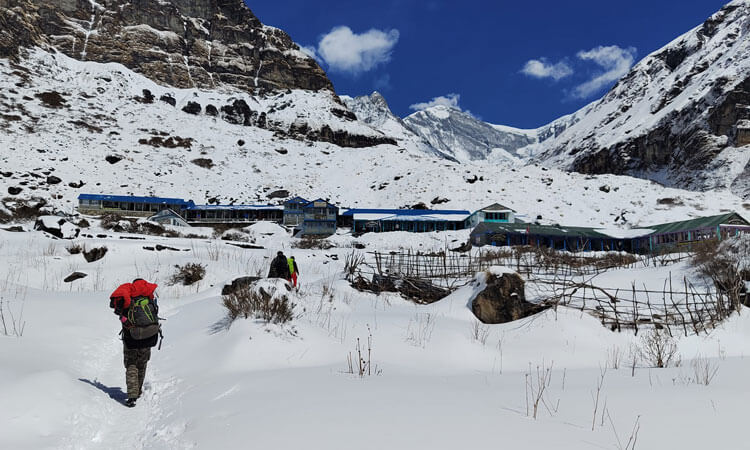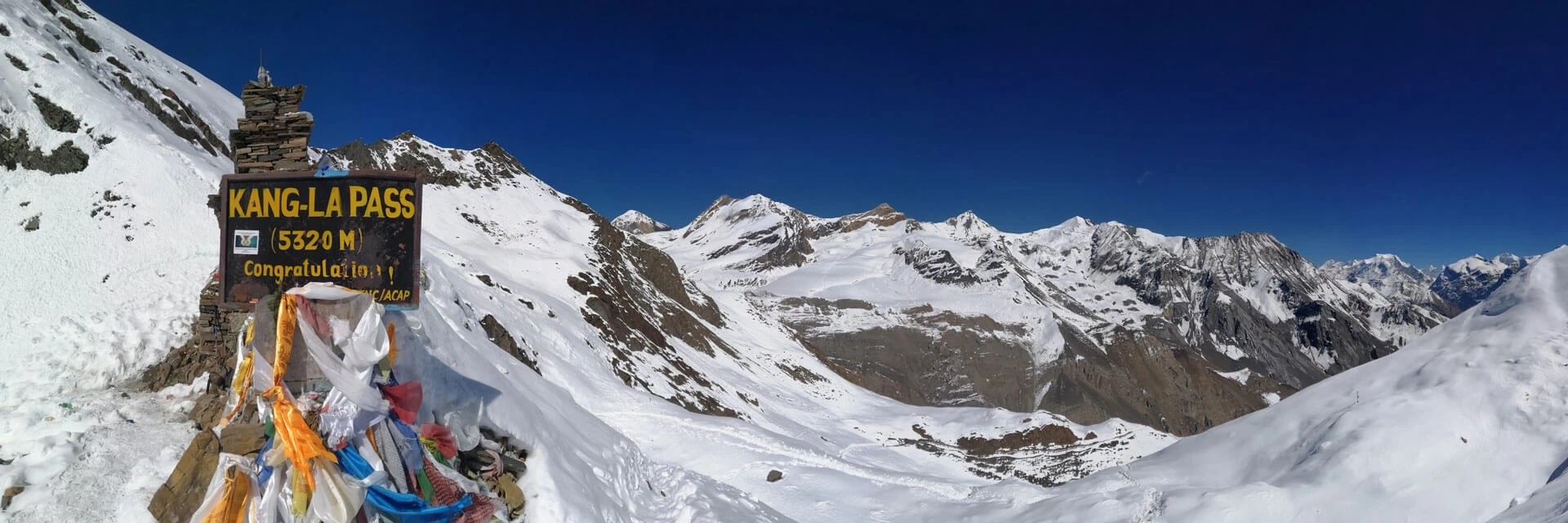Why Choose a Less Crowded Trek in Nepal?
Choosing a less crowded Trekking destination in Nepal isn't just about avoiding people and commercial trekking destinations, it's about genuinely loving the entire experience.
Authentic Cultural Experience: In these less crowded remote trekking regions, you will find true culture and traditions that have been safeguarded for ages. The people are more raw and natural with their hospitality, so that you are not just another customer, but you are a special guest. You will encounter diverse, unique communities of Gurung, Tamang, Sherpas, Magars, etc, and know their history, culture, and lifestyles.
Pristine Natural Beauty: Since all of these 8 Less Crowded Hidden Gems Treks in Nepal are less trodden by mass tourism, they remain untouched and raw. Thy trails are more off the beaten path, and the surroundings are cleaner and fresher. Most significantly, you will not find the pristine natural beauty in the more commercial trekking destination, which is exclusive. With the absence of crowded trekkers and commercialization, you will find absolute peace, and you will witness the real sense of being in the wilderness.
True Adventure: Due to fewer travelers, these less crowded trekking destinations in Nepal have off the beaten trekking, basic homestay accommodation, local delicacies, and traditional settlements. All these give you the real thrill of true adventure, the original spirit of trekking.
Supporting Local Economy: When you choose to travel to more remote, less crowded trekking destinations, it helps distribute income to the community. Like the popular and commercial trekking region of Nepal, these less crowded regions don’t benefit from mainstream tourism. So whatever amount you spend in the region on food, accommodation, or small entrance charges, it directly goes to the local community, which largely benefits them.
Flexibility and Freedom: These less crowded trekking regions in Nepal deliver you with absolute itinerary flexibility and freedom. Due to fewer trekkers, there shall be no pressure of advance accommodation booking. Depending on your time schedule, you can customize your itinerary whenever you want. You, being one of the few trekkers in the region you will have more choices, space, and comfort.
Let us now explore the 8 Less Crowded Hidden Gems Treks in Nepal:
Though iconic routes like Everest Base Camp and Annapurna Circuit may offer incredible experiences, but many now seek less crowded and noncommercial destinations. Now, it has been a trend that travelers seek authentic trekking, pristine trails, and genuine cultural experiences.
These 8 Less Crowded Hidden Gems Treks in Nepal provide the perfect alternative to popular trekking destinations.
1. Mardi Himal Trek: Newly Opened Himalayan Gem.
- Maximum Elevation: 4,500m / 14,763 feet
- Region: Annapurna
- Difficulty: Moderate
- Permits Required: ACAP (Annapurna Conservation Area Permit)
- Best Season: March-May, September-November, January-February

The Mardi Himal Trek is one of the most trending trekking destinations in Nepal. Situated in the east of the popular Annapurna Base Camp trek, the Mardi Himal trek is a beautiful, newly opened off-the-beaten-path journey. Besides being less crowded, it offers you the closest view of Annapurna South, Hiunchuli, and the iconic Machhapuchhre (Fishtail).
This newly established trekking route was opened only in 2012, but the teahouse trekking started only in 2020. Being a new trekking destination, it still remains uncrowded, giving you a beautiful trekking experience. Since the trail to Mardi Himal Base Camp is very new, you will have the opportunity to enjoy an off-the-beaten-path experience.
This trek is a masterpiece that takes you through lush forested trails into the alpine Himalayan meadow. As you reach Bandal Danda or Mardi High Camp, you will be amazed by the view of the surrounding valleys under the snowcapped mountains. The view of cloud settling at the bottom of the deep valleys that creates a white sea is exceptionally phenomenal. The final climb to Mardi Himal Base Camp (4,500m) on the alpine meadow is breathtaking, which feels like you have stepped into another world.
Why is Mardi Himal Less Crowded?
Mardi Himal Trek is relatively new, and many trekkers don’t know about it, or they choose to do the classic Annapurna Base Camp Trek.
Since the teahouse trekking in the region started pretty late, it has not yet gained commercial popularity.
Mardi Himal Trek is a shorter trek option that attracts travelers with a tight time schedule, due to which it does not attract mass crowds. However, they are missing a true gem, which is more stunning than regular ABC.
Many Trekkers seek comfort and big groups organized by commercial trekking companies, which Mardi Himal Trek lacks.
2. Nar Phu Valley Trek: Tibet in Nepal
- Maximum Elevation: 5,320m / 17,454 feet.
- Region: Manang District, Annapurna.
- Difficulty: Challenging
- Permits Required: ACAP (Annapurna Conservation Area Permit) and Restricted Area Permit (RAP)
- Requirement: Minimum 2 trekkers with a registered local company and a licensed guide.
- Best Season: March-May and September-November
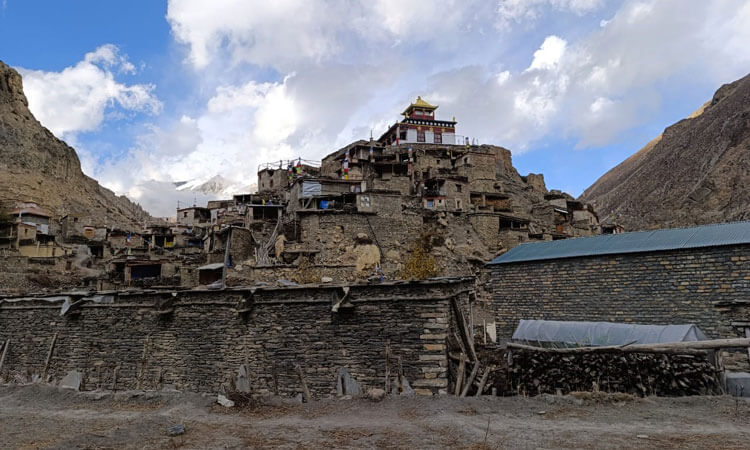
The Nar Phu Valley Trek is truly a hidden gem situated in the northern part of the Annapurna Circuit route of Manang District. Journey to the restricted area of Nar Phu is truly an expedition into a hidden corner of Nepal. Since it is a restricted area, it requires a special restricted area permit and receives fewer than 500 trekkers annually.
It is rightly said ‘Tibet in Nepal’ because Nar Phu offers the most authentic Tibetan cultural experience, largely untouched by modern influence. This hidden valley was opened to the outside world only in 2002, and it is a living museum of Tibetan culture.
Since Nar Phu is less traveled by trekkers, the landscapes are dramatic and still very pristine. It has highly preserved the centuries-old monasteries, ancient traditional Tibetan villages, traditional stone houses with ancient architecture, and their unique culture. The valley is a Tibet-like arid plateau that gives you medieval vibes as you step into the region.
Why is Nar Phu Valley Less Crowded?
Nar Phu is a restricted area and requires a Special Permit. Besides, 2 trekkers are the minimum requirement, and it is mandatory to be affiliated with a legally registered local company, and must be accompanied by a registered Guide. This requirement can make the trip expensive, which keeps away budgeted and mass trekkers.
The Valley lacks comforts and other amenities compared to popular treks. Due to its basicness, challenging terrain, and absence of modern lodges and services, it discourages travelers seeking comfort and luxury.
Since Nar Phu has not been widely marketed internationally, only a handful of trekkers know about it.
3. Pikey Peak Trek: Best Everest Viewpoint:
- Maximum Elevation: 4,065m / 13,335 feet.
- Region: Lower Everest (Solu Region)
- Difficulty: Easy to Moderate
- Permits Required: Gaurishankar Conservation Area Permit (GCAP)
- Best Season: March-May, September-November, January-February

Much like Mardi Himal, Pikey Peak Trek is one of the most trending treks, which is located in the Solu region of Everest. You can customize the Pikey Peak Trek to be shorter or longer depending on your time schedule. This trek proves that to get the best view of Everest, you don’t really need to trek for weeks to Everest Base Camp.
Most people think you need to trek for two weeks to get a great view of Everest. The Pikey Peak provides you with one of the most spectacular mountain panoramas with many world’s highest mountains, including Mount Everest. No wonder Sir Edmund Hillary declared Pikey Peak as one of the most stunning vantage points, giving you the best view of Everest and other mountains. It is also said that Pikey Peak happens to be Edmund Hillary’s best viewpoint, which he has mentioned in several books and interviews.
If you are seeking to know about the rich Sherpa Culture, it's not the Khumbu Everest Trek; in reality, it is the Pikey Peak Trek that gives you great insight into the real Sherpa culture. The trek takes you through charming Sherpa villages, lush forests, and high alpine meadows. Both sunrise and sunset views from Pikey Peak are equally stunning and cannot be compared with any other viewpoint on the traditional EBC trail.
Why is Pikey Peak Less Crowded?
It falls under the shadow of world world-famous Everest Base Camp trek, due to which trekkers overlook this incredible alternative.
Pikey Peak is a recently trending destination, so many have not even heard of it.
Though Pikey Peak offers a magical panoramic view, many trekkers still dream of reaching the legendary Everest Base Camp. Besides, after the Lukla Airport and the construction of the roadway, it does not fall on the main section of Everest.
Pikey Peak Trek is a short trek, so it does not receive enough volume of visitors as trekkers seek longer treks to have a closer view of Everest.
4. Manaslu Circuit and Tsum Valley Trek: The Mountain of Spirit:
- Maximum Elevation: 5,106m / 16,752 feet
- Region: Gorkha District, West-Central Nepal.
- Difficulty: Challenging
- Permits Required: M.C.A.P (Manaslu Conservation Area Project Permit), Manaslu Restricted Area Permit (MRAP), A.C.A.P permit (Annapurna Conservation Area Project), Tsum Valley Restricted Area Permit (TRAP), and Local Municipality Permit.
- Requirement: Minimum 2 trekkers with a registered local company and a licensed guide.
- Best Season: March-May, September-November, January-February

Both the Manaslu Circuit Trek and the Tsum Valley Trek are the most pristine and culturally diverse regions of Nepal. The region of Manaslu and Tsum is both a restricted area that requires a special permit, and mandatorily, trekkers must be associated with a registered local company accompanied by a registered trekking guide.
Tsum Valley, situated to the northeast of the Manaslu region, is the ‘Hidden Valley of Happiness’. It takes you into a restricted area, an isolated Tibet-like valley that was concealed from the outside world until 2009. This less-traveled destination takes you to the untouched Tibetan landscapes with timeless villages, ancient monasteries, and pristine valleys.
On the other hand Manaslu Circuit takes you to the base of Mt. Manaslu, 8,163m, the world's eighth-highest mountain. The valley of Manaslu is still very untouched, where teahouse trekking started very recently. It offers a great alternative to the commercial Annapurna Circuit Trek.
It is an ancient trading route and has served as a crucial route during the Salt Trade Era between Nepal and Tibet. The cultural diversity, the traditional architecture, ancient settlements, and the beauty you find in Manaslu can't be compared. The trek eventually leads you to the challenging Larkya La Pass (5,106 m), which offers one of the most spectacular panoramic views.
Both these restricted area gives you great insight into Tibetan Buddhism, with a unique culture that revolves around non-violence and compassion. They are still very ancient and untouched by commercial influence. If you are looking for an extended trek in the region, you can very well combine Tsum Valley and Manaslu in one itinerary.
Why are Manaslu and Tsum Valley Less Crowded?
Both Manaslu and Tsum Valley is a restricted area that requires a special permit. Trekking into these valleys will require 4-5 permits, and 2 trekkers is the minimum requirement. All trekkers must be associated with a legally registered local company and must be accompanied by a registered guide. All these may make the trip expensive, which does not appeal to budget-conscious trekkers.
The starting point of both these treks is far from Kathmandu, which may require an 8-10 hour drive. The availability of local or tourist buses can sometimes be rare. Besides, traveling in a local bus can be painful, and a private vehicle may cost expensive. The trek itself is long and may discourage many trekkers.
Besides being expensive, the facilities in Manaslu and Tsum are basic, which may not appeal to travelers looking for both comfort and adventure.
5. Kanchenjunga Base Camp Trek: The Five Jewels:
- Maximum Elevation: 5,143m / 16,873 feet
- Region: Taplejung District – Far East Region, bordered between Nepal and India
- Difficulty: Challenging / Strenuous
- Permits Required: Kanchenjunga Conservation Area Project Permit (KCAP) and Kanchenjunga Restricted Area Permit (KRAP)
- Requirement: Minimum 2 trekkers with a registered local company and a licensed guide.
- Best Season: March-May, September-November, January-February
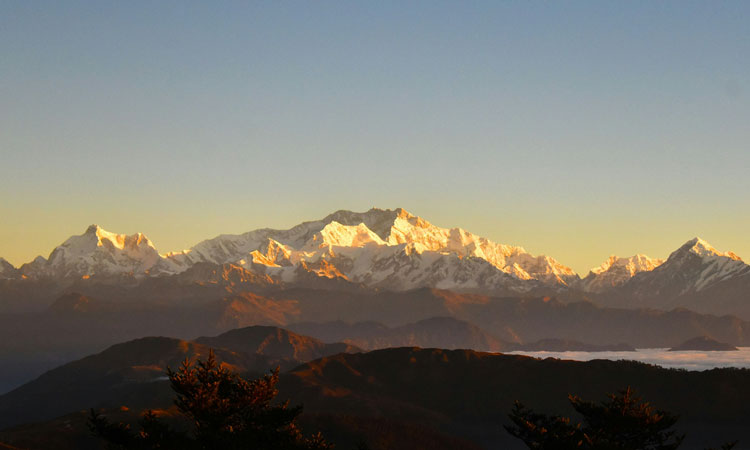
If you are looking for a less crowded, off-the-beaten-path ultimate adventure, then a trek to Kanchenjunga North and South Base Camp will be a Holy Grail. Kanchenjunga, the third-highest mountain in the world, is located in the far eastern corner of Nepal.
The region is considered one of Nepal’s most remote regions that offers your genuine wilderness experience. Kanchenjunga is a restricted area, and due to its distance and remoteness, the region only receives fewer than 200 visitors annually. Despite the trek being long and demanding, Kanchenjunga offers you the most pristine landscapes.
The Kanchenjunga region is culturally very rich. You will witness beautiful harmony among the diverse local communities of Gurung, Limbu, Rai, Sherpa, and many more. As you walk into this remote region, you will be amazed by the rich traditional villages with unique customs and still untouched by outside influence.
Besides authentic culture and raw wilderness, Kanchenjunga offers you the most spectacular mountain scenery. Significantly, Mt. Kanchenjunga is referred to as the ‘Five Jewels’ due to its five prominent summits, which are all above 8000 meters. It is certainly a majestic mountain range with two separate base camps, North and South.
The Kanchenjunga Trek is perfect for those seeking solitude and a wilderness adventure away from the crowds and commercial destinations. This trek takes you into the pristine Himalayan wilderness, where you can connect with nature and enjoy the natural beauty.
Why is Kanchenjunga Less Crowded?
Its remote location, long duration, and high difficulty level make it accessible only to a handful of dedicated trekkers each season.
Besides being a restricted area, the Kanchenjunga location is very remote, and the traveling distance is very long. It is not as easily accessible as Everest or Annapurna. Travelers are to prepare for all the effort to reach the starting point. Due to all these, treks to Kanchenjunga can be expensive, which discourages budgeted visitors and trekkers with limited time.
The Kanchenjunga trek level of difficulty is very high. It is strenuous and high-altitude walking in rugged and remote mountain terrain. This level of difficulty promptly discourages beginners and most trekkers who fancy doing easier trekking routes.
As said Kanchenjunga region is very remote and off the modern comforts. The teahouse lodges, food, and other tourism services are very limited and basic, which does not appeal to most trekkers.
Though Kanchenjunga Trek is a hidden gem for those seeking a less crowded adventure yet it has not received the same level of promotion as other popular destinations.
6. The Ruby Valley Trek: A Cultural Gem in the Ganesh Himal
- Maximum Elevation: 3,842m / 12,604 feet.
- Region: Ganesh Himal Region – Between Lantang and Manaslu valley.
- Difficulty: Moderate
- Permits Required: Langtang National Park Entrance Permit
- Best Season: March-May, September-November, January-February
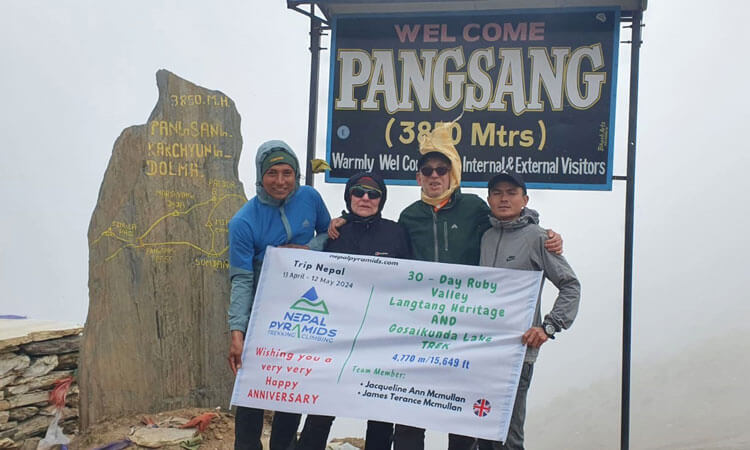
The lesser-known Ruby Valley trek in the Ganesh Himal range that connects the districts of Dhading and Gorkha is an excellent alternative to Nepal's commercialized routes. If you are looking for a moderate trek with an authentic cultural experience and spectacular pristine scenery, the Ruby Valley Trek will be a great option.
The trek offers the authentic Nepal trekking experience in the heart of the Ganesh Himal region. The valley is still virgin and untouched by mass tourism, and the cultural authenticity is still intact as compared to crowded Everest or Annapurna.
The valley is inhabited by traditional Tamang and Gurung communities, where you will experience genuine village life and absolute serenity. The trail, the forests, and the landscapes are still very pristine, where you will not face the pressure of mass tourism and inflation that has become common in popular destinations.
Ruby Valley is still very untouched and known as a virgin trek, because it is still very less traveled, with only a handful of trekkers annually. Due to this, Ruby Valley is still very raw and offers you solitude and a personal connection with nature.
The region being less crowded, you have the freedom to take your own pace, stop for photos anytime you want, and take extra time to enjoy the traditional village or the pristine scenery. Trekkers will have no pressure whatsoever, they can truly enjoy their mountain vacation in relish.
Why is Ruby Valely Less Crowded?
Though Ruby Valley is indeed a hidden gem, it still receives very few visitors annually.
Most trekking agencies focus on destinations that attract higher volumes and profits, due to which they hardly promote Ruby Valley Treks.
Since Ruby Valley is a newly trending destination, it does not appeal to many travelers coz it does not provide any bragging rights.
The Marketing and promotion of this valley is almost zero, so only a few people know about it.
The facility in the Ruby Valley region is still basic, and accommodations are homestays and community lodges, which do not appeal to many trekkers looking for comfort.
The Ruby Valley remains a virgin destination for adventurers seeking off-the-beaten-track and pristine beauty, and thus discourages mass tourism.
7. Lower Dolpo Trek: Snow Leopard Territory:
- Maximum Elevation: 5,169m / 16,959 feet.
- Region: Dolpo District, Western Nepal.
- Difficulty: Strenuous
- Permits Required: Dolpo Restricted Area Special Trekking Permit.
- Requirement: Minimum 2 trekkers with a registered local company and a licensed guide.
- Best Season: March-May, September-November, January-February
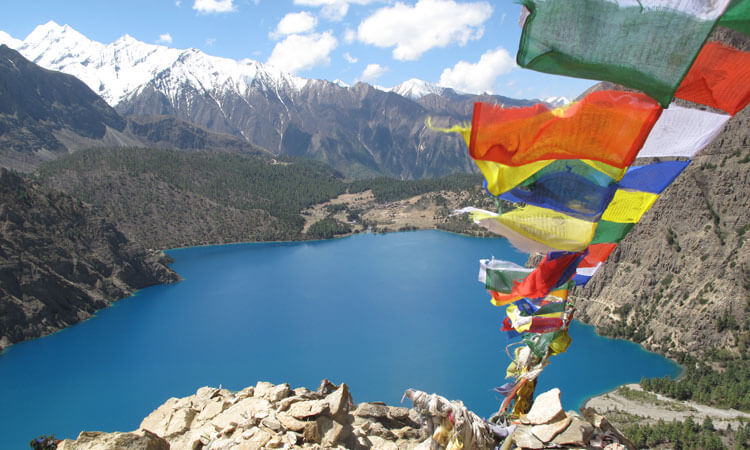
Another less crowded, isolated, and the most remote region that offers a real trekking experience is the restricted area of Dolpo. It is said that the pristine landscape of Dolpo inspired Peter Matthiessen to write the classic ‘The Snow Leopard’ about his 1973 journey into the rugged Dolpo region.
Peter Matthiessen's book ‘The Snow Leopard’ clearly describes the pristine landscapes, the primitive setting, the unique culture, and the lovely people of Dolpo. Besides the book being the quest for the rare snow leopard, it significantly deals with the inner discovery. The harsh landscapes and personal challenges that they face make their journey a spiritual exploration.
Dolpo is Nepal’s largest and most remote district, which is a Tibet-like arid highland but stunningly beautiful. The Shey Phoksundo Lake, Nepal’s deepest lake, the depth of which is 145 m / 476 feet, is considered one of the most beautiful lakes in the world. This restricted area of Dolpo preserves one of the most ancient Bonpo and Tibetan Buddhism, where the human culture is still very traditional and unique.
If you are seeking to be in a place that offers pristine wilderness and ancient culture, the Lower Dolpo trek will surely be a perfect choice. It is said that the region of Dolpo is so isolated that it still preserves the raw, untouched beauty, ancient human culture, and natural ecosystem.
As you trek into this less crowded restricted area, you will find unique wildlife, pristine lakes, ancient monasteries, cultural villages with traditional architecture, and ancient practices, including ancient farming techniques.
Why is Dolpo Less Crowded?
The region of Dolpo is a restricted area and requires a Special Trekking Permit for both lower and upper Dolpo. Furthermore, Dolpo is very isolated, and there are no direct road connections, and the logistics will involve mountain flights to Juphal from Nepalgunj. Due to all these Dopo trek can be expensive.
Besides, the trek to Dolpo is challenging, and the journey can be time-consuming, and it will not appeal to visitors who prefer more accessible destinations. Since Dolpo is restricted, there are limitations of being affiliated with a registered company, having a registered guide, and a minimum of 2 trekkers. Many trekkers don’t really like all these complications, and they opt for more trekking destinations like Annapurna, Everest, or Langtang.
The region of Dolpo is very little traveled by visitors, due to which it lacks modern amenities that may discourage travelers who prefer more established routes and comfort.
The cost of the Dopo trek can be higher than compared of other popular trekking destinations, which may discourage budgeted travelers. Significantly, travel agencies don’t bother marketing remote, uncertain, and time-consuming destinations like Dolpo.
8. Makalu Base Camp Trek: The Great Black Peak:
- Maximum Elevation: 4,870m / 15,977 feet.
- Region: Sankhuwasabha District, Makalu Barun National Park, Eastern Nepal.
- Difficulty: Strenuous
- Permits Required: Makalu-Barun National Park Permit and Makalu Rural Municipality Permit.
- Best Season: March-May, September-November, January-February
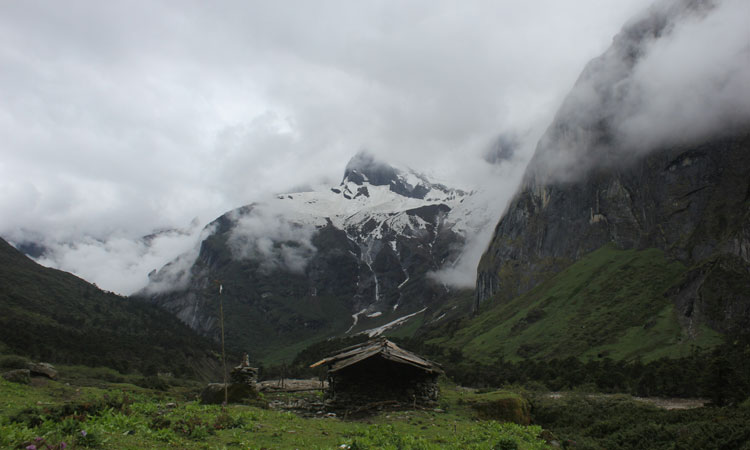
Mt. Makalu, which is also known as the Great Black Peak, is the world’s fifth-highest mountain, standing 8,485 meters / 27,838 feet tall. The trek to the base camp of this isolated peak is incredible. It is a challenging trek and is less traveled by visitors. However, the trek to Makalu Base Camp is considered one of the most off-the-beaten-path through pristine valleys along the untouched Makalu-Barun National Park.
The Makalu Base Camp trek is still very virgin and considered Nepal's most isolated trekking destination, but it offers incredible mountain scenery and an authentic cultural experience. This is certainly a true wilderness trek that gradually takes you from a spectacular, lush forested valley to the High-altitude alpine region.
The trek passes through the Makalu and Barun National Park, where communities like Sherpa and Rai maintain authentic lifestyles showcasing their unique cultures. The genuine wilderness experience you get in Makalau Base Camp Trek is nowhere to be found.
History states that this route was widely used by the Tibetan and Nepali traders during the Salt Trade Era. The route can be challenging, but the scenic views and pristine environments, and magical landscapes make it all an incredible journey. The diverse and well-conserved biodiversity, the raw wilderness, genuine culture, and its remoteness give you the true trekking feeling.
Why is Makalu less Crowded?
Makalu Base Camp is quite isolated, and the journey to the starting point can be long. The accessibility is not as easy as compared to other treks, and it involves a flight to Tumlingtar and a long drive.
The trek requires a maximum number of days, which promptly restrains trekkers looking for a reasonable length mountain vacation.
Due to its remoteness, the Makalu Base Camp Trek is challenging, besides being long. Though it offers a genuine trekking experience into the real mountain wilderness still due to its ruggedness it still attracts only experienced trekkers and prevents beginners. There are other minute factors due to which Makalu Base Camp is the least traveled base camp as compared to other popular base camps.
The isolated region of Makalu lacks amenities. It has fewer lodges, and the services required for attracting tourism are still very basic. The valley is still very new to tourism and lacks hospitality and services, which discourages visitors preferring more established trekking destinations.
Though the trek takes you to the base of the fifth-highest mountain in the world, it is less famous than Everest or Annapurna due to poor marketing and promotion.
Best Time for 8 Less Crowded Hidden Gems Treks in Nepal:
- Spring Season (March-May): Soon after winter, Nepal goes through the phase of Spring Season, which is considered best for mountain climbing, including Mt. Everest. It is a traditional season that is believed to deliver clear weather, clear mountain views, blooming Rhododendrons, with moderate temperatures.
- Autumn Season (September-November): Much like the Spring Season, the Autumn Season in Nepal is also a traditional trekking and climbing season that has been going on for ages. It is also known as a 'Festival Season' due to big traditional festivals falling during this period. Autumn season is said to deliver the most beautiful weather with exceptional mountain views and comfortable temperatures.
- Winter Options (December-February): However, due to CLIMATE CHANGE, Spring and Autumn in Nepal are not being very favourable, so now trekkers are opting for Winter Trekking in Nepal. Despite cold temperature, winter have managed to deliver the most promising weather with absolutely unhindered views. No wonder Winter Trekking is now trending in Nepal.
Essential Preparation Tips
- Physical Fitness: All of the above-mentioned treks require a sound level of physical fitness. Getting sick or being out of shape is actually a nightmare when you are in the mountains. Pre-physical training is are must if you want to fully enjoy these remote areas of Nepal.
- Acclimatization: When you are planning for one of these less crowded treks in Nepal, we highly recommend planning your trip with adequate time for acclimatization. Acclimatization is crucial if you are going over 3000m so that you can adapt to thin air.
- Leave No Trace: Please follow the minimum impact travel guides, their principles, and practices to reduce our environmental footprints.
- Guides and Permits: Most of these treks, which are tagged as restricted areas, will require a registered company, a licensed guide, and Special Trekking permits, which are non-negotiable.
- Nepali Time: This is Nepal, and most of the time, things don’t always happen on time. We request that you get conditioned to it and go with the flow.
- Travel Insurance: We highly recommend an all-inclusive travel insurance policy covering all the aspects of your adventure, including trip delays, cancellation, loss of property, sickness, or air evacuation.
- Go Local: Choose a local company, local guide, and porters, and support the community whenever you are in their region
Honorable Mentions: Less Crowded Trekking Trails in Nepal:
Now, let me give you a few honorable mentions on less crowded trekking destinations in Nepal, which are truly hidden valleys. They are the hidden gems that offer the authentic Nepal trekking experience without the crowds. These pristine valleys offer you untouched wilderness, genuine local culture, and a serene environment. These are the destinations where you find your solitude and discover your inner self.
Upper Mustang Trek
The Forbidden Kingdom of Upper Mustang Trek stands as one of Nepal's most exclusive regions that delivers you pristine wilderness experiences. Though the Korala Highway has been constructed in the region connecting Tibet and Nepal, it still offers an ancient Tibetan kingdom vibe that is still untouched by modern tourism.
Upper Mustang is a restricted area and requires Special Trekking Permits. It is very popularly known as the 'Grand Canyon of Nepal'. It is also known as 'the Desert of Nepal' due to its nature of being arid, Tibet-like environment, which falls under the rain shadow area.
It takes you into the different face of Nepal with dramatic red cliffs, ancient sky caves, medieval-style settlements, and ancient monasteries. It is an ancient Kingdom which was opened to the outside world only in 199,2 with fascinating history, myths, and legends.
Langtang Gosaikunda Helambu Trek
The Langtang Gosaikunda Helambu Trek is one of the closest trekking destinations to the capital city of Kathmandu that offers a true wilderness trekking experience. Though it is a closest mountain adventure route delivering an unforgettable trekking experience yet it is less crowded trekking destinations.
It is the First Himlayana National Park established in 1976 and home to the RED PANDAS, yet it could not attract mass tourism as compared to Everest and Annapurna. However, it is a highly sought-after trekking destination after Everest and Annapurna, which takes you into the alpine wilderness in a short period of time.
The region of Langtang and Helembu is still very untouched, with unspoiled landscapes and well-preserved traditional culture. It is the land of the Tamangs and Sherpas with their unique culture and customs, and language. Besides all these, the Langtang and Helembu trek offers you one of the most spectacular mountain and landscape views.
Going over Lauribina Pass 4,610m / 15,124 feet, being at Holy Gosaikunda Lake, and staying at Kyanjin Gumba with a 360-degree mountain view is simply phenomenal. You will walk through the traditional villages with ancient Tibetan architecture and where locals are friendly and treat you as a special guest.
Khopra Ridge Trek
Another very popular classic off-the-beaten-path trek is the Khopra Ridge Trek in the region of Annapurna. It is a genuine off-the-beaten-path adventure, which offers the most spectacular view of the Annapurna massif with community-based lodges. Kopra Trek is certainly a hidden valley with the most charismatic mountain view, offering a less crowded trekking experience.
This epic trek takes you into the pristine valley through the dramatic forest setting into the serene Himalayan meadow. The everyday sunrise and sunset view is something you would not get anywhere. It takes you deep into the concealed valleys of Annapurna, away from the maddening and commercialized trekking destinations.
Khopra Danda or Ridge gives you the best panoramic views of the world's prominent peaks like Mt. Dhaulagiri, Mt. Annapurna I, Annapurna South, Nilgiri, Holy Machapuchare (fishtail), etc. If you are looking for a serene wilderness trek in Nepal away from mass tourism, the Khopra Ridge Trek will be the most appropriate choice.
People also searched for the prominent 5 Annapurna Viewpoint Trek.
Annapurna Hidden Lake Trek
The Annapurna Hidden Lake Trek is a newly established trekking destination that is just getting trending. Not many know about this trek since it started operating only in late 2024. Annapurna Hidden Lake is truly a hidden gem, which is still virgin and only a handful of trekkers have managed to visit it.
This Hidden lake, which is at a height of 4372 m, is precisely hidden as it is hidden at the base of the Annapurna South mountain, 7,219 meters. The trek offers you one of the most secretive and pristine wilderness trekking experiences into the unknown.
This less crowded trek to Hidden Lake takes you into the untouched valleys where sacred alpine lakes remain hidden. The serenity and natural ambience you find in the hidden valley give you the feeling where you truly connect with nature and god. The journey takes you through remote villages, pristine forests, and alpine Himalayan meadows where you enjoy your being.
Being a newly opened trekking destination, you will find the trails are still very untouched, basic accommodation facilities, absolute peace, but stunning scenery.
North Annapurna Base Camp Trek
Similar to the Annapurna Hidden Lake Trek, the North Annapurna Base Camp Trek is also a newly opened trekking destination that started operating from 2023. Both these treks provide a great alternative to the overly crowded Annapurna Base Camp Trek.
The North Annapurna Base Camp Trek is also known as the Maurice Herzog Trail. In the historic 1950 French Annapurna I Expedition, Maurice Herzog took this trail to conquer Annapurna I. This newly established trekking destination to the base of Annapurna I, the world's 10th-highest mountain, offers a pristine, less crowded, and off-the-beaten-path trekking experience.
This route was formally inaugurated in June 2025, which takes you to the alpine Himlayan medow at 4,190m. However, due to its newness, the region has minimal infrastructure with a raw trekking trail and camping accommodation facilities.
You can say that it is certainly a raw, wilderness-focused adventure that takes you into the remote, rugged terrain, offering solitude and serenity. As you trek into the valley, you go through traditional Gurung and Magar villages and through untouched landscape, you will reach pristine Panchakunda Lake. The trek is truly virgin, giving youa genuine trekking experience and that true feeling of being in the raw Himalayan wilderness.
